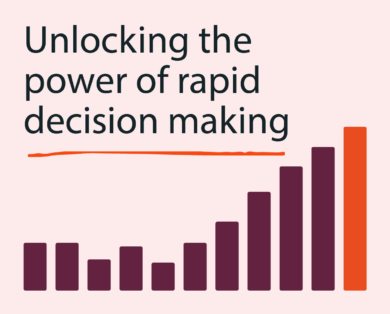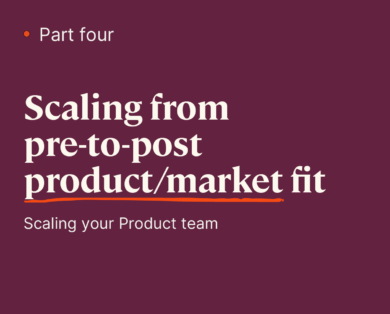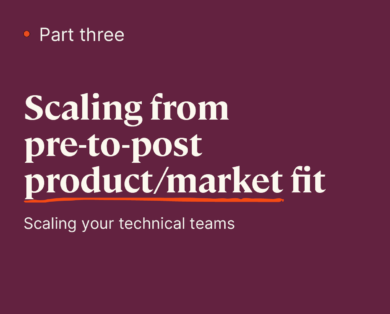- 09 April, 2025
In this article, Laura offers a guide for how executives should think about timing, structuring and executing a secondary transaction.
Also catch part I of this series The European Liquidity Gap — why it matters and how to fix it.
1. When is the right time?
For founders
Most founders are driven by the long-term success of the business they are building and are sensitive to dilution.
However, after several years of below market pay, and potentially increasing financial demands, it is understandable you might look to sell a small part of your holding in order to relieve financial pressures and de-leverage.
As a general rule, your business should have achieved some measure of success before you look for liquidity. At this stage, you are well past achieving product-market-fit, likely at Series C or beyond and are firmly in the scaling stage with reasonable revenue visibility.
For employees
Once you’ve reached the stage described above, you may also want to consider providing some liquidity for early employees. You can do this selectively on a first-in basis. But as the business scales, partial liquidity can be a useful retention tool for key talent across the board by making equity compensation tangible and easing individual financial stressors. You may also want to consider structuring an employee liquidity program. (Part 3 of this series will cover this topic.)
For investors
Early investors may need to crystallise returns given the term of their funds, pressure from LPs to return capital, or with a view to monetising carry for personal reasons. From the company side, this moment can be a good opportunity to clear up the long tail of early investors and replace these with new value-add investors.
For angels
Business angels may want to recycle money into new investments, diversify their positions in companies where they have a large paper gain or address a personal financial pain point.
What we’ll cover:
- When is the right time to provide liquidity?
- What is the “right” amount of secondary and who should you make it available to?
- How should you run a secondary process?
- What type of information should you be prepared to share in an off-cycle secondary transaction?
- How should you think about valuation?
- How should you select the buyer: internal or external?
2. The right amount, to who?
What is the “right” amount of secondary and who should you make it available to?
As we mentioned in part I of this series, you need to be thoughtful about the quantum to avoid negative signalling and/or creating adverse incentives. You should consider setting a % limit on employees, including founder, sales. The standard in our experience is usually 10%.
Once you reach a given scale, you may also want to consider setting a $ limit.Many businesses take a hybrid approach here such that they set the sale limit at the lesser of % or $ amount.
3. How to run a secondary process
There are a few issues you want to try to front-run from the outset.
First, you ideally want to avoid unknown or limited value-add third parties making their way into your cap table. There are several ways you can avoid this by being prescriptive in the shareholder agreement both through right of first refusal (ROFR) and explicitly blocking people from selling without board approval.
Second, be cognizant of the jurisdiction you are operating in as large secondary transactions in the US can trigger a 409A valuation for instance.
Assuming you have taken these considerations into account, there are several scenarios for running a secondary transaction depending on the total size of the secondary, timing, and the number of buyers or sellers:
Discrete sale between rounds:
These often occur due to unanticipated changes in early shareholder liquidity needs, be they investors, founders or employees; a delay in an anticipated liquidity event; or existing investors being unable or unwilling to pick up any secondary such that they do not exercise their ROFR. This is primarily the kind of situation Balderton focuses on. In this instance, due diligence and the subsequent offer to the seller are made with management buy-in.
Funding round
Many startups will choose to provide liquidity at the time of the funding round. This can be efficient from a management perspective as materials will already have been prepared for the primary round and any additional primary demand can potentially be funnelled into secondary liquidity.
Tender offer
A tender offer is essentially when an investor offers to buy shares off all shareholders at a set price within a given time frame. Most secondary transactions are not considered tender offers as they usually involve a small number of shareholders. But the process may resemble a tender offer. We have seen situations, particularly involving employee liquidity, in which we complete due diligence and agree a term sheet with management to invest up to a given amount. Management then shares this information with eligible employees who can choose to opt in or out, usually with a % maximum sale amount per employee as outlined above.
How not to run a process
Be careful when allowing an existing investor or indeed any third party to run a secondary process for you. We have seen situations in which the investor structures a secondary transaction such that they participate in the upside after a given return on the secondary investor’s investment, in exchange for running the process.
Needless to say, this can be a major turn-off for new investors, particularly if they are buying into a share class with fewer downside protections and would expect to be compensated for this with full upside participation.
As a general rule, it is best not to resist providing liquidity to early shareholders who genuinely need it for too long. What often happens in these cases is that these stakeholders go out to the market (either through secondary brokers or unknown third parties) to find liquidity. Multiple stakeholders going out to the market without management support will almost invariably lead to the negative rumour mill springing into action. Not least because this liquidity will often have to be taken at significant discounts.
Why? Basic bargaining power. All other things being equal, a larger consolidated secondary sale will usually lead to a better valuation outcome than a more fragmented secondary being negotiated and sold piecemeal by smaller shareholders. This isn’t to say management should feel compelled to move as quickly as liquidity is asked for, but managing potential seller expectations can avoid some of the more negative signalling outcomes already discussed.
This means clearly communicating the time frame you might consider providing liquidity during and offering a structured process for it.
4. Information preparation
What type of information should we be prepared to share in an off-cycle secondary transaction?
Though we are always careful to minimise the burden on management between rounds, there is a minimum amount of information we need to see, as will be the case with most long term investors. In practice, this means having access to the data room if there was a recent round, monthly reporting and any latest board decks you produce as a matter of course.
Of course, there are some buyers willing to come in with no visibility whatsoever, often facilitated by secondary brokers. I would consider the likely correlation between those investors expressing no interest in the current performance of the business and their ability to add value over time.
5. Valuation
How should we think about valuation?
Most secondary investors take a market-based approach to valuation. Below are some of the basic elements that get baked into establishing the price of a secondary:
| Data Point | Considerations |
|---|---|
| Last round valuation (or current round valuation, if secondary simultaneous) | This will often be used as a valuation anchor, though this becomes less useful the longer it has been around. |
| Share class | Common stock is usually sold at a discount of c.20% to preferred stock. This compensates the buyer for fewer downside protections (e.g. no liquidation preferences). |
| Time elapsed since last round and growth rate | If the last round was done several months ago or more, and the growth rate is very high, it is reasonable to conclude the current fair market value of the business is higher now. |
| Precedent secondary transactions | Investors will look at any recent significant secondary done, which they may use as a benchmark for valuation. |
| Business plan and forecasts | As with any valuation exercise, your business plan and the credibility of your forecasts will be critical. |
| Competitor set | Both historical and projected performance help to establish the valuation comp sent. We would consider other primary rounds, precedent transactions, historical IPO and current market multiples. |
6. Buyer selection
How should we select the buyer: internal or external?
Setting aside the ROFR of existing investors, having a new addition to the cap table can be helpful for several reasons. It can add a new network, platform of services and set of senior partners to complement the existing set of shareholders. If the secondary investor wants a board seat (this is not something we would usually expect), this can also be a useful way to flesh out the board or even substitute a smaller shareholder out if need be.
When selecting among several external buyers, you should vet them in the same way you would any primary investor. Ideally, this means welcoming an investor capable of adding value over the long term who shares management’s vision for the business going forward.













